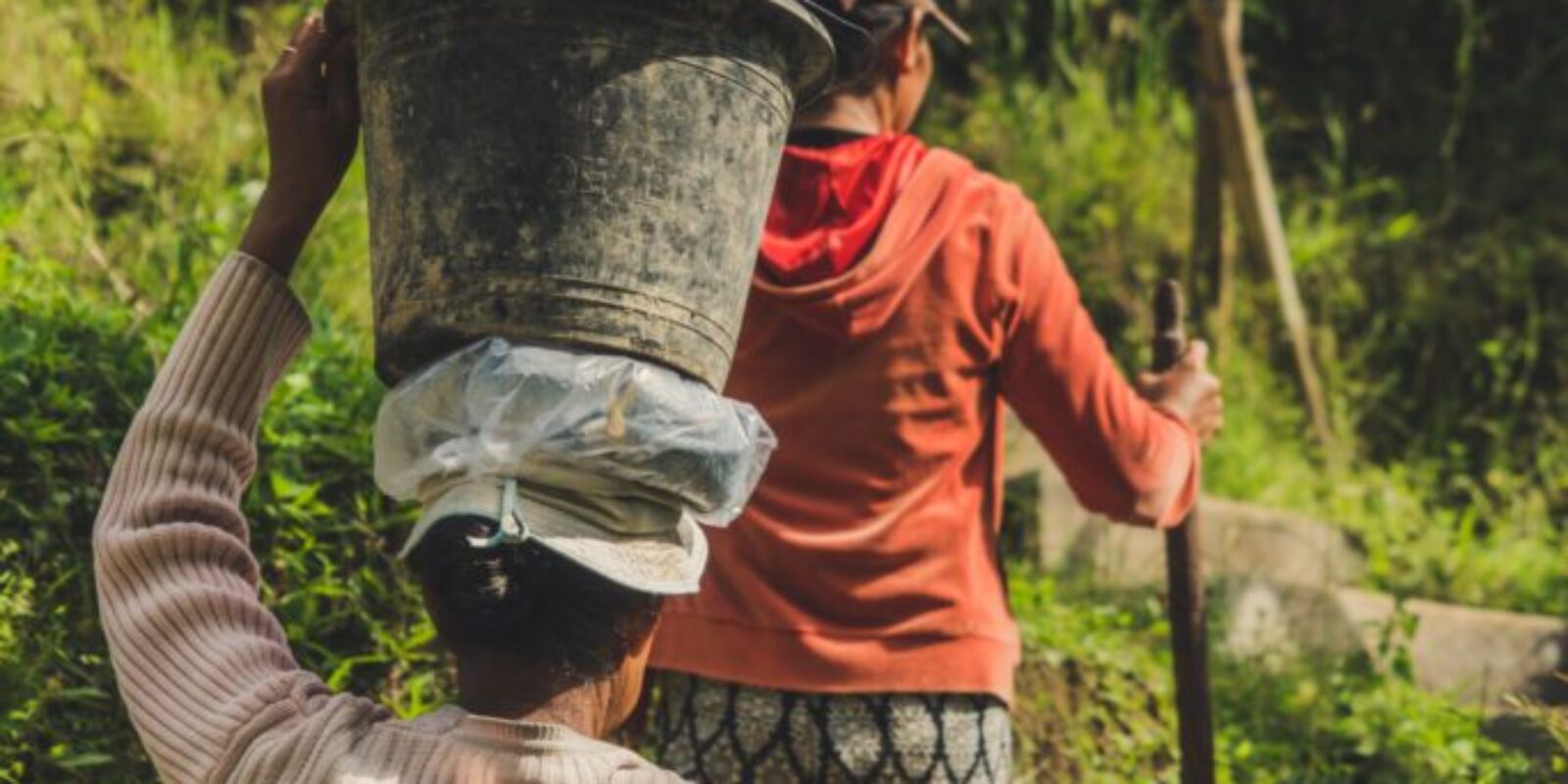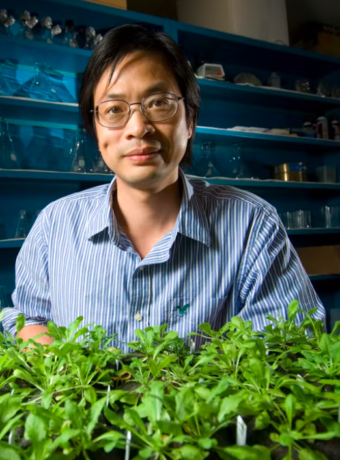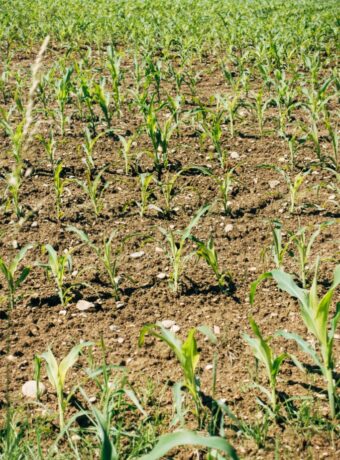This week’s ‘Global Food System Bite’ comes from an article titled Hunger Is Increasing Worldwide But Women Bear The Brunt Of Food Insecurity.
According to the United Nations, over 820 million people worldwide do not have enough food to eat. This is an increase of over 60 million people from just a few years ago, and the trend shows no sign of slowing down. Hunger is a complex problem with many causes, but one thing is clear: it disproportionately affects women. Women make up the majority of the world’s small-scale farmers, yet they often lack access to the resources they need to be successful. They also shoulder the majority of the burden when it comes to collecting water and firewood, which leaves less time for them to grow food or earn an income. As a result, women are more likely to experience hunger and malnutrition than men. The good news is that there are things we can do to address this problem. We can help women gain access to land, water, and other resources. We can also support women-led initiatives that are working to end hunger in their communities. By coming together, we can make a difference in the fight against global hunger.

Despite significant gains in global food security since 2015, the number of people experiencing hunger has increased by 150 million since 2019. The main drivers of this trend are conflict, climate change and economic instability. In addition, COVID-19 has exacerbated food insecurity by disrupting supply chains and causing job losses. As a result, it is estimated that over 2 billion people will experience some form of food insecurity by the end of 2020. While the situation is dire, there are things that can be done to improve food security. For example, investing in small-scale farmers and supporting local food systems can help to make food production more resilient to shocks. In addition, increasing social safety nets can ensure that people have access to food even when their income is disrupted. By taking these steps, we can start to reverse the trend of increasing hunger and ensure that everyone has enough to eat.
According to the United Nations, 2.3 billion people were food insecure in 2021 with 276 million (12%) facing severe food insecurity. This rapid and sustained increase in hunger over a short time is highly concerning. So too, is the growing gender gap , with 32% of women compared to 27.5% of men going hungry. The UN reports that this is the highest number of food insecure people since their records began in 1990. The reasons for this spike in hunger are numerous and complex, but include factors such as climate change, economic instability, and conflict. In order to address this problem, it is essential that we better understand the root causes of hunger and work together to find solutions. Only by working together can we hope to ensure that everyone has enough to eat.
Why Women are Disproportionately Affected
Something that I love that this article points out is that “the global food system needs to be understood as a mirror of society. It reflects income inequalities and the uneven distribution of goods and services and, as such, is likely to show the same underlying structural inequalities as society at large.”
In most societies, women are responsible for domestic chores such as cooking and cleaning. They also often bear the brunt of caring for children and elderly family members. As a result, women typically have less time and fewer resources available to earn an income. In addition, women often face discrimination in the workforce, resulting in lower wages and fewer opportunities for advancement. All of these factors contribute to higher levels of poverty among women, which in turn makes them more vulnerable to food insecurity. Moreover, food insecurity can have a negative impact on reproductive health, which can further exacerbate the cycle of poverty and hunger. Given all of these factors, it is not surprising that women are more likely to experience food insecurity than men.

The causes of food insecurity are complex and multi-dimensional. However, two important dimensions are the availability of food (is there enough food?) and the accessibility of food (is it affordable?).
Recently, the availability of food has been challenged by climate crises, conflicts, and disruptions due to the COVID-19 pandemic. At the same time, cost of living pressures have pushed the accessibility of food beyond the means of many people in both developed and developing countries. In 2018, the United Nations estimated that there are 821 million people who do not have enough to eat, and this number has only increased in recent years.
There are a number of factors that contribute to these challenges in availability and accessibility. Climate change is making it more difficult to grow crops and raising the risk of extreme weather events that can destroy crops or disrupt transportation systems. Conflicts can damage infrastructure and block access to markets, while also displacing communities. And finally, the COVID-19 pandemic has led to widespread job losses and reductions in incomes, making it more difficult for people to afford food.
While the causes of food insecurity are complex, there are a number of ways to address them. One is to increase investment in small-scale farmers and support programs that help them adapt to climate change. Another is to invest in social safety nets that provide cash or food assistance to people who are struggling to afford enough to eat. Finally, it is important to build resilience into our food systems so that they can better withstand shocks like pandemics or economic crises. By addressing the root causes of food insecurity, we can ensure that everyone has access to the nutritious food they need to lead healthy and productive lives.

While there has been progress made in gender equality in recent years, women still experience a lower socio-economic status than men on many measures. Globally, 388 million women and girls live in extreme poverty right now, compared to 372 million men and boys. Oxfam reports that women earn 24% less than men, work longer hours, have more precarious work and do at least twice as much unpaid work. This inequality is exacerbated by the fact that women are less likely to own land or have access to financial services, and are more likely to be employed in sectors with lower pay and fewer benefits. While some countries have made strides in closing the gender gap, much more needs to be done to ensure that women have the same opportunities as men to lead prosperous lives.
In many parts of the world, women are responsible for the vast majority of food production, yet they often lack access to land, credit, and other resources. They also face unique obstacles when it comes to purchasing food, due to gender-based violence, discrimination, and child care responsibilities. As a result, women are more likely to experience hunger and malnutrition. Income disparities are also an important factor to consider. Even when food is in abundance, it cannot be accessed without money. Accordingly, a bigger gender gap in income equality also means women have fewer means to purchase food. The negative impact of income inequality on food security is compounded by the fact that women are more likely to live in poverty than men. In order to address the issue of food insecurity, we must first address the root causes: gender inequality and poverty. Only then will we be able to truly make progress in combating this global problem.
Women make up a significant proportion of the agricultural workforce in developing countries, yet they often lack the resources and agency to improve their circumstances. In many cases, women do not have equal access to land or credit, which makes it difficult for them to generate income. This is a major contributing factor to poverty and food insecurity. The Higher Level Panel of Experts on Food Security has recognized the importance of improved women’s agency in reducing poverty and ensuring food security. In Australia, despite being a wealthy country, food insecurity is a serious problem. Women are particularly vulnerable to food insecurity, yet they are not counted in official data collection efforts. This lack of data makes it difficult to create targeted policies that would improve the situation for women and ensure that everyone has access to adequate food.
What about Australian Women
In recent years, there has been a great deal of debate about food security in Australia. Some people have argued that the country is not producing enough food to meet the needs of its population, while others have claimed that Australia is actually a net exporter of food. So which is it? According to the Department of Agriculture, Fisheries and Forestry, concerns about food security are “understandable, yet misplaced” because Australia “[…] produces substantially more food than it consumes.” In other words, there is no need to worry about the country running out of food anytime soon. This is good news for everyone— from farmers and food producers to consumers and policymakers. It means that we can all rest assured that our pantries will be full for many years to come.

It is widely assumed that everyone in Australia has access to food. However, this is not the case. There are many Australians who struggle to put food on the table due to financial insecurity, and there are many reasons why someone might experience food insecurity, but one of the most common is poverty. Poverty can make it difficult to afford healthy food or even enough food to meet basic needs. It can also make it difficult to access food, especially if you live in a remote area or have transportation problems. Gender is also a factor in food insecurity. Women are more likely than men to experience food insecurity, due to gender inequality in wages and work opportunities.
The issue of food insecurity is complex and multi-faceted. It is important to remember that when we talk about availability of food, we also need to consider accessibility and affordability. Only then can we truly understand the issue and work towards solving it.
Data from Food Bank, the food relief organisation, reveals that 17% of Australian adults are “severely” food insecure. This is a significant issue that cannot be dismissed simply because there is enough food available in the country. Gender dimensions, the difference between individual, household and domestic food security, and the link between poverty and food insecurity are all factors that must be considered when discussing food security in Australia. Without taking these things into account, it is impossible to get an accurate picture of the issue at hand.
This data is not segregated by gender, we can surmise a food insecurity gap if we use income as a proxy; “Indeed, the Australian parliament reports that women’s median weekly earnings were 25% lower than men’s in 2019, suggesting women may also have reduced access to food. We may also expect a ‘food security gap’ with other marginalised groups such as the aged, people with disabilities, sole parents, and Indigenous populations.” Recognising that women’s food security cannot be separated from broader concerns of agency, policies must consider the specific issues of gender equality, women’s rights and empowerment.
Women play a vital role in food security and agriculture, yet they often lack the resources and agency to meet their full potential. In order to close the gender gap in food security, policies must take into account the specific issues of gender equality, women’s rights and empowerment. Data collection is essential to improve our understanding of the situation and to formulate effective policies. Governments must allocate funding for systematic data collection, which should be segregated by gender. This would provide valuable insights into the barriers preventing women from achieving food security. By recognising women’s crucial role in food security, we can take steps to ensure that everyone has access to nutritious and sustainable foods.



